Brief Overview
Key Events: This week will see the release of several important data, such as US non-farm payrolls, eurozone inflation rate and Federal Reserve meeting minutes, which are crucial to the crypto market sentiment.
Central Bank Updates: Inflation and job market data will directly impact the policy decisions of the European Central Bank and the Federal Reserve, potentially triggering wild swings in crypto prices.
Global Perspective: Geopolitical risks, regulatory policy changes and energy price fluctuations make the market more complicated, especially the potential impact of Elon Musks X-Money plan and Chinas GDP growth deserve more attention.
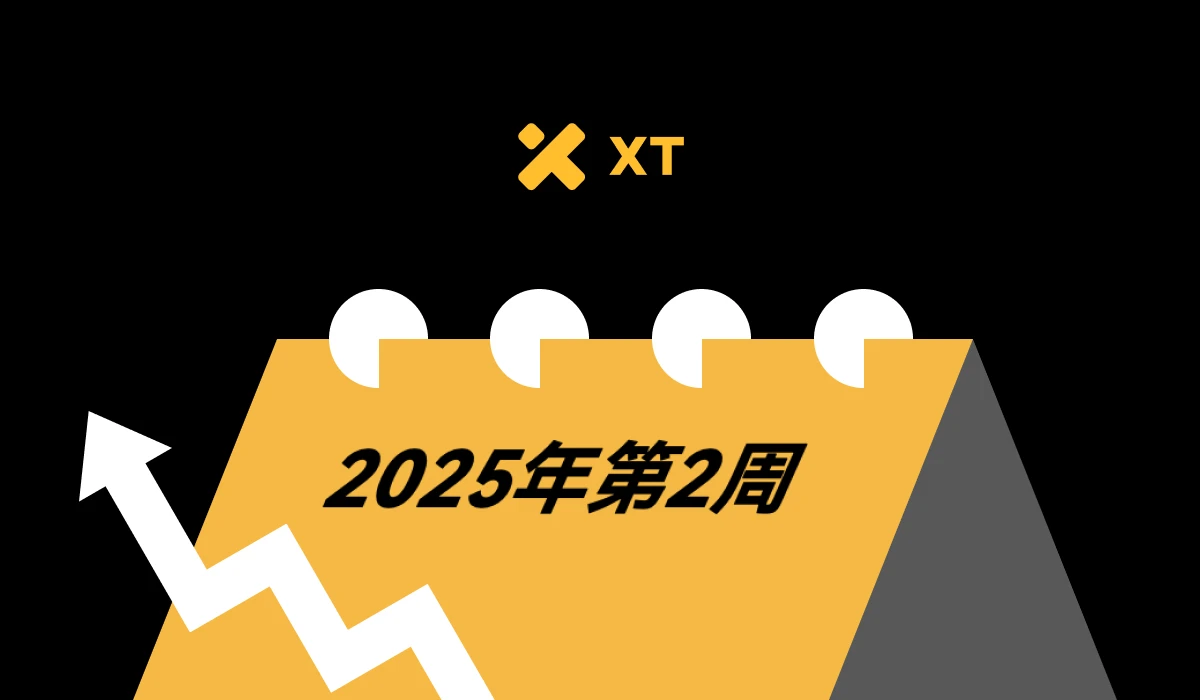
As the second week of 2025 approaches, a series of important economic data will be released. These data will not only have a wide-ranging impact on the global market, but are also equally important to the rapidly developing crypto market. From inflation trends to the latest developments in the job market, these indicators will provide us with key clues to interpret market trends, liquidity changes, and central bank policies.
Why Week 2 is Crucial for Crypto Traders
The new year has just begun, and the markets attention to inflation, employment data and central bank decisions continues to heat up. For crypto traders, the focus is still on how macroeconomic changes affect the price trend of digital assets in a volatile environment.
Week 1 Review
Week 1 of 2025 provides us with some initial signals of global economic trends:
China: The manufacturing PMI released by the National Bureau of Statistics fell slightly to 50.1, indicating that despite continued policy support, the economic recovery process still faces challenges.
Germany: Unemployment rose slightly, highlighting the pressures facing Europes largest economy.
United States: The ISM manufacturing PMI climbed to 49.3, indicating that the U.S. manufacturing industry may be stabilizing after several consecutive months of sluggishness.
These data set a cautiously optimistic tone for the start of the new year. Traders are closely watching the upcoming data releases and policy developments to formulate more precise investment strategies.
Table of contents
Overview of important economic data from January 6 to January 10
Macroeconomic drivers: inflation, consumer behavior and job market resilience
Central bank policies and their impact on the crypto market
US non-farm payrolls data
Eurozone inflation rate
Federal Reserve Minutes
US ISM Services PMI
Focus on key economic indicators
Respond flexibly to changes in market sentiment
Smart management of volatility risk
Global risks and opportunities
Geopolitical risks: How they impact markets
X-Money Project and the Future of Bitcoin
Regulatory dynamics and the rise of central bank digital currencies (CBDCs)
The impact of energy price fluctuations on crypto mining
What to watch this week
There will be several important economic data releases this week that may have a significant impact on market trends. For crypto traders, understanding these trends in advance is key to developing trading strategies.
Overview of important economic data from January 6 to January 10
Here are some key data to watch this week and their possible market impact:
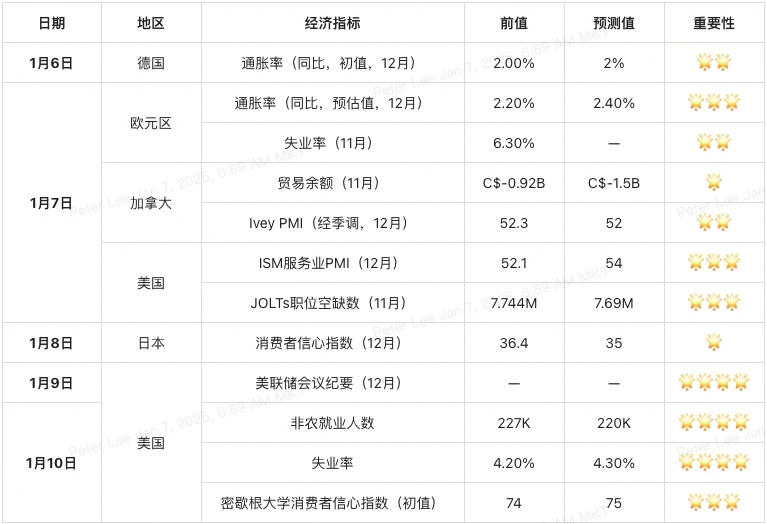
Macroeconomic drivers
Inflation: The key to central bank decision-making
Europe: Inflation data from Germany and the eurozone will provide important clues for the ECB’s future monetary policy. If inflation continues to be high, it may trigger more tightening measures, which in turn will affect the market’s risk appetite, and the crypto market will not be immune.
United States: Producer Price Index (PPI) and core inflation data will determine the markets expectations for the Feds next policy. If inflation slows, it may stimulate the market to invest more in risky assets, including cryptocurrencies.
Consumer spending and confidence
United States: ISM Services PMI and the University of Michigan Consumer Confidence Index are important indicators for assessing economic resilience and spending power. If the data is strong, it may mean continued economic stability, but it may also reduce the likelihood of the Fed easing policy. For the crypto market, this may be both an opportunity and a pressure.
Job Market Dynamics
The non-farm payrolls data released this Friday is the focus of global markets. If the data is lower than expected, it may indicate that the labor market is cooling, which will increase the possibility of the Federal Reserve turning to an easing policy, which is good for the crypto market.
Central bank signals
Fed Minutes (Thursday): The minutes will provide details of the Feds internal discussions during the December meeting, and traders will look for signals about rate cuts or policy shifts. If the content is accommodative, the crypto market may be boosted; conversely, hawkish remarks may dampen market enthusiasm.
ECB: Inflationary pressures in the euro area remain a major challenge to market confidence. If there are signs of further tightening, it may affect trading activities of euro-denominated stablecoins and related crypto assets.
Key data analysis
US non-farm payrolls (Friday, January 10)
Why it matters: As a core indicator of the health of the U.S. economy, the performance of non-farm payrolls has a direct impact on the market. Strong data usually boosts the dollar and weakens the performance of risky assets (including cryptocurrencies); conversely, if the data is weaker than expected, it may lead investors to bet on the Fed to ease policy, which is beneficial to the crypto market.
Forecast: The number of new jobs is expected to be 220,000 (previous value: 227,000).
Possible impact: If the data exceeds expectations, the market may experience a brief correction; while a result below expectations may stimulate a rebound in cryptocurrency prices, especially when investors expect the Federal Reserve to adopt a more relaxed policy.
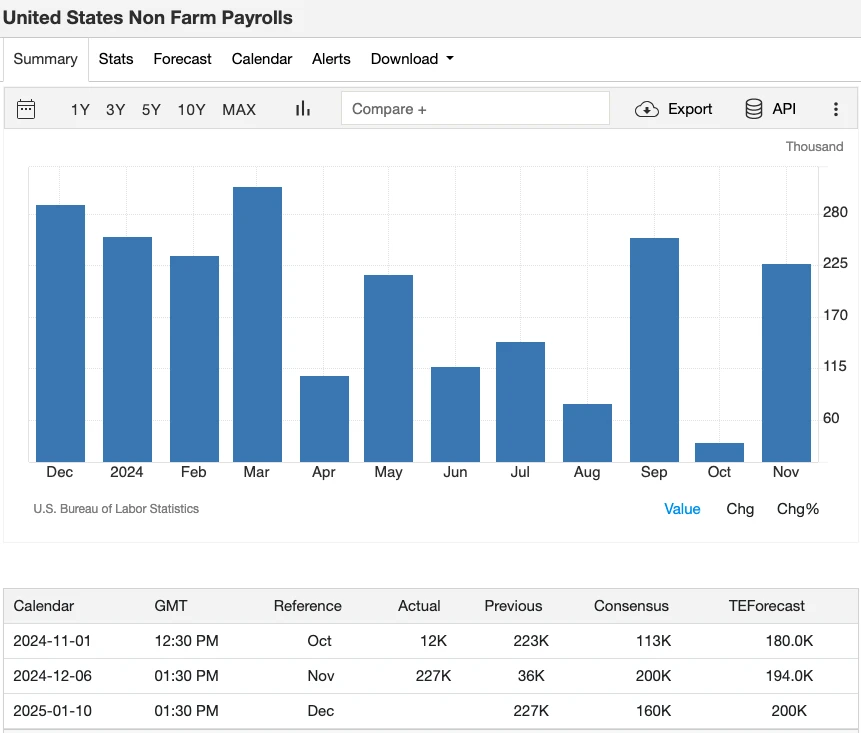
Image Credit: Trading Economics
Eurozone inflation rate (Tuesday, January 7)
Why it matters: Inflation data is an important reference for the ECBs policy decisions. High inflation usually means that tightening policies will continue, while slowing inflation may make the market expect a shift in policy easing.
Forecast value: Year-on-year increase of 2.4% (previous value 2.2%).
Possible impact: If the data is higher than expected, the market may be more cautious about risky assets (including euro-denominated stablecoins and crypto assets); while if inflation is lower than expected, it may release more risk appetite and bring benefits to the crypto market.
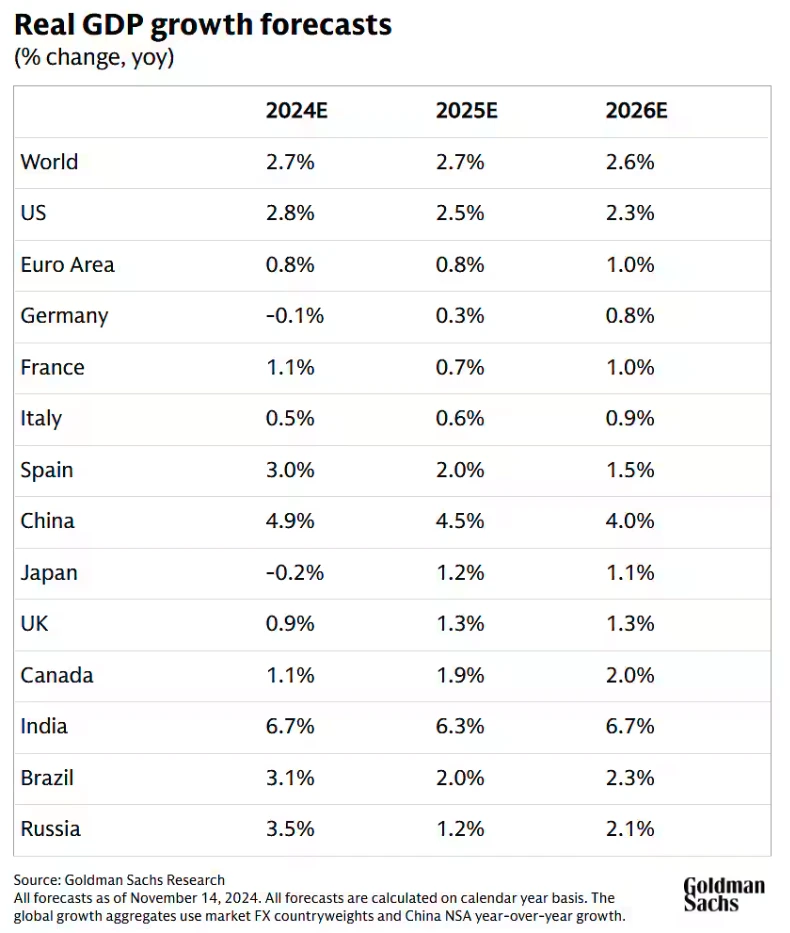
Image Credit: Trading Economics
Federal Reserve Minutes (Thursday, January 9)
Why it matters: The minutes will provide details of the Fed’s internal policy discussions in December and are an important window into the direction of monetary policy in 2025.
Possible impact: The relatively loose signals may push up the markets expectations for the Feds interest rate cuts, thereby boosting crypto market sentiment; while hawkish content may make investors more cautious and depress the prices of risky assets.
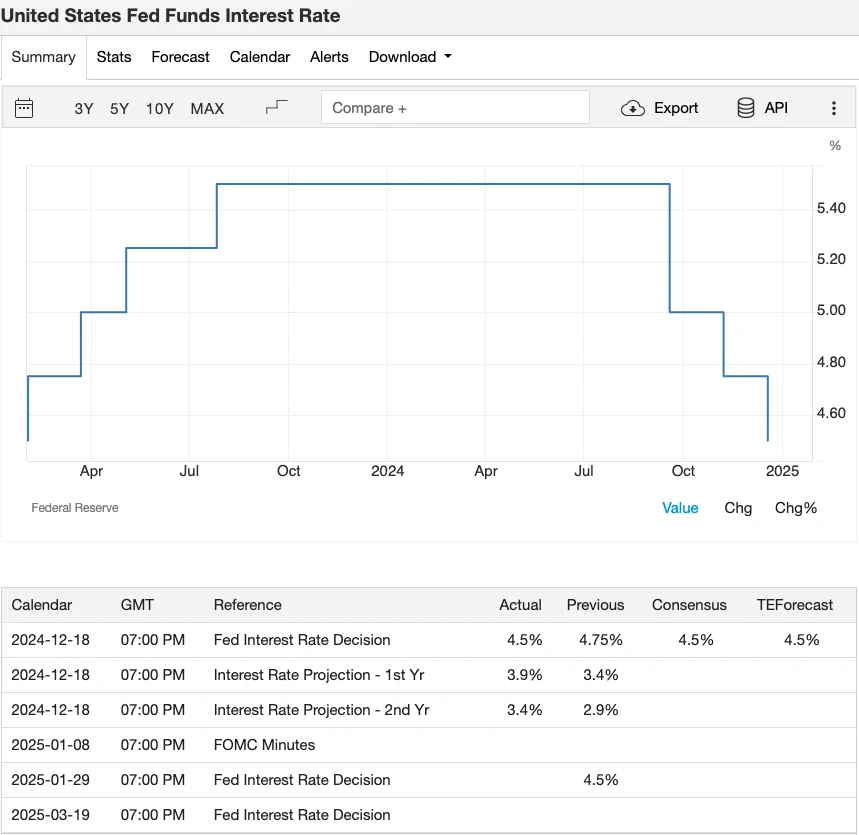
Image Credit: Trading Economics
US ISM Services PMI (Tuesday, January 7)
Why it matters: The data reflects the overall health of the U.S. service sector and is an important indicator for assessing economic resilience.
Forecast: 54.0 (previous 52.1).
Possible impact: If the data is strong, it may strengthen the markets confidence in the stability of the US economy, but it may also reduce the possibility of the Federal Reserve easing its policy, which will put some pressure on the crypto market. On the contrary, data that is lower than expected may stimulate more risk appetite and provide support for crypto asset prices.
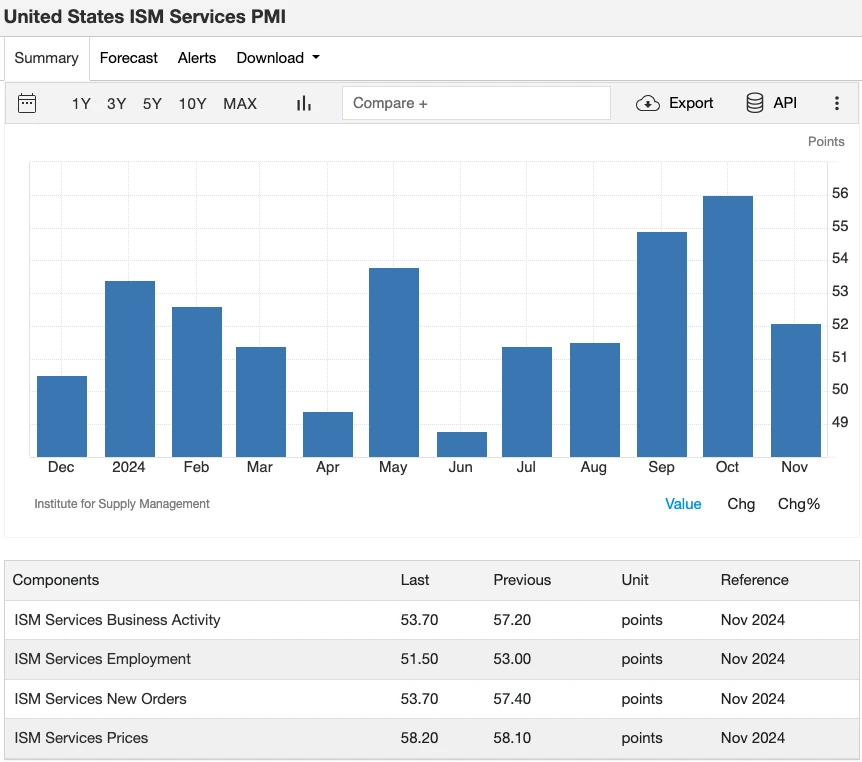
Image Credit: Trading Economics
Traders Strategy Guide
Keep a close eye on key economic data
This weeks US non-farm payrolls and ISM services PMI are of great importance. These data not only reveal the labor market and economic vitality, but also directly affect the price trend of the crypto market.
Don’t ignore the eurozone’s inflation data, either, as it could affect the ECB’s policy direction and indirectly affect euro-related crypto assets and stablecoin transactions.
Respond flexibly to market sentiment
As the Fed minutes and Eurozone economic data are released, market sentiment may fluctuate rapidly. Hawkish signals may put pressure on risk assets, while dovish signals may stimulate cryptocurrency prices to rise.
Stay sensitive and adjust strategies in a timely manner to deal with emotional fluctuations caused by policy expectations or data performance.
Smart management of market fluctuations
High-impact events such as non-farm payrolls and Fed minutes tend to exacerbate market volatility. At these critical times, you can protect your positions and reduce your risk exposure by setting stop-loss orders or hedging appropriately.
Ensure sufficient liquidity before and after the release of major data so that you can flexibly adjust your trading plans when the market fluctuates violently.
Global risks and opportunities
Geopolitical risks and their market impact
Geopolitical tensions remain a potential risk that the crypto market cannot ignore.
United States: After Trump took office, the market expected that the United States might take a more friendly attitude towards cryptocurrencies, which may promote the further mainstreaming of crypto assets.
China: In contrast, China has banned private Bitcoin holdings and is focusing on promoting the digital yuan. This divergent policy direction could exacerbate market uncertainty and volatility.
Global hot spots: The continued escalation of the situation in Ukraine and the conflict in the Middle East also adds risks to the market. Although Bitcoin is sometimes seen as a safe-haven asset, its correlation with traditional financial assets is weakening this characteristic.

Image Credit: CSO Online
X-Money Project and Bitcoin Future
Elon Musks X-Money initiative is expected to be a breakthrough in the payments space.
Subverting the payment landscape: According to reports, X-Money will deeply integrate cryptocurrency functions and may completely change traditional payment methods.
Opportunities for Bitcoin: As the price of Bitcoin gradually approaches $100,000, the market has high hopes for Musks plan, believing that it may lead to more institutional participation and accelerate the global popularity of Bitcoin.

Image Credit: Tekedia
Regulatory policies and CBDC (Central Bank Digital Currency) development
The global regulatory environment for cryptocurrencies is changing rapidly:
UK: The Financial Conduct Authority (FCA) plans to introduce stricter crypto regulatory policies by 2026, which may have long-term effects on the market.
Morocco: New cryptocurrency laws are being drafted while exploring the launch of its own central bank digital currency (CBDC).
Bank of England: Decision on digital pound remains in wait-and-see phase, which may affect the competitive dynamics between cryptocurrencies and CBDCs.

Image Credit: Bitcoinist
Energy Prices and Crypto Mining Costs
Energy price fluctuations directly affect Bitcoin mining activities:
High costs inhibit production: If energy prices remain high, miners may slow production, which will have an impact on network computing power and Bitcoin supply.
Low costs promote expansion: If energy prices fall, miners may expand production and increase the supply of Bitcoin in the market.
Environmental pressure: As global attention to sustainable development increases, the mining industry is facing greater environmental pressure. In particular, Musk’s emphasis on energy efficiency in the X-Money plan may have a significant impact on future mining methods .
Energy prices not only affect miners, but also influence investors expectations for Bitcoin, bringing new variables to market trends.
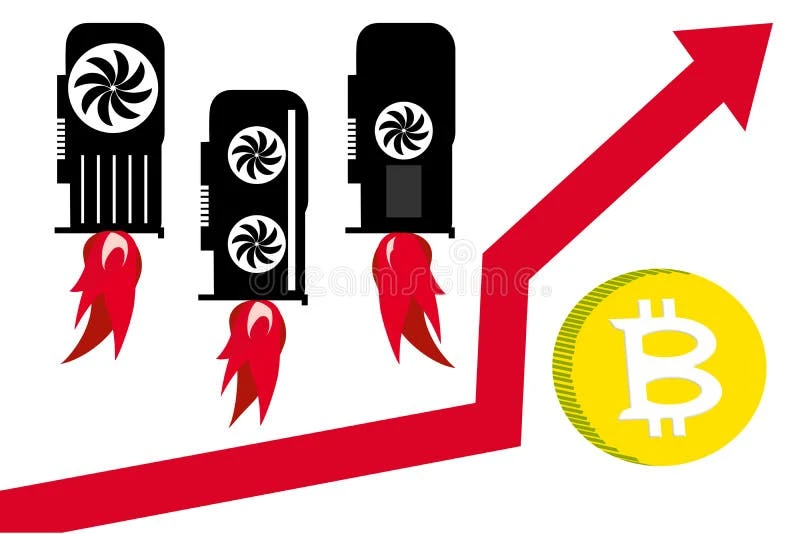
Image Credit: Dreamstime
Week 3 and beyond
Upcoming Data and Trends
Week 3 will see the release of several important economic data, including key indicators such as consumer confidence, inflation rate and GDP growth. In addition, US retail sales data will also be released this week, providing important reference for consumption trends.
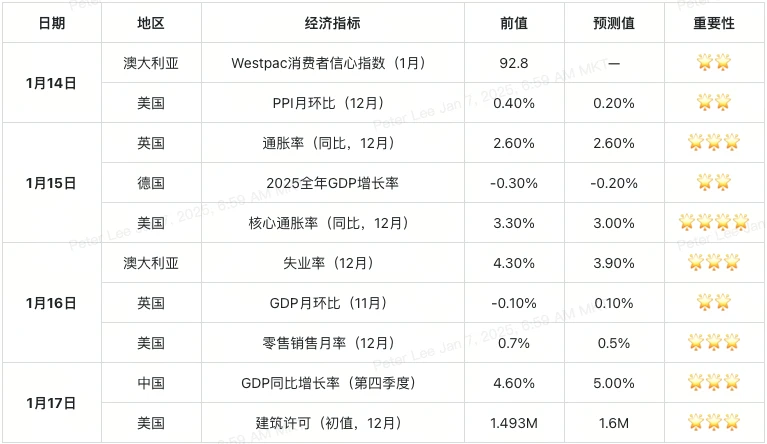
Metrics to watch (Jan 13–Jan 17)
China GDP Growth
Why it matters: China’s GDP grew 4.6% in the third quarter, showing challenges in the housing market and domestic demand. The fourth quarter forecast of 5.0% will reveal whether policy stimulus is starting to take effect. If the data is strong, it could boost global market confidence and inject more money into crypto assets related to the Asian market.
US core inflation rate
Why it matters: The core inflation rate was 3.3% in November, indicating that inflationary pressures remain. The forecast for December is 3.0%, which will directly affect market expectations of Fed policy. If the data is lower than expected, it may drive up the prices of risky assets, including cryptocurrencies.
US Retail Sales Data
Why it matters: December retail sales data is expected to be released mid-week. These data will reflect holiday consumption performance and directly affect the markets judgment on the resilience of the economy. Strong consumer data may show that the economy is healthy, but it may also reduce expectations of the Federal Reserves easing policy, bringing mixed reactions to the crypto market.
About XT.COM
Founded in 2018, XT.COM currently has more than 7.8 million registered users, more than 1 million monthly active users, and more than 40 million user traffic within the ecosystem. We are a comprehensive trading platform that supports 800+ high-quality currencies and 1,000+ trading pairs. XT.COM cryptocurrency trading platform supports a variety of trading products such as spot trading , leveraged trading , and contract trading . XT.COM also has a safe and reliable NFT trading platform . We are committed to providing users with the safest, most efficient, and most professional digital asset investment services.










